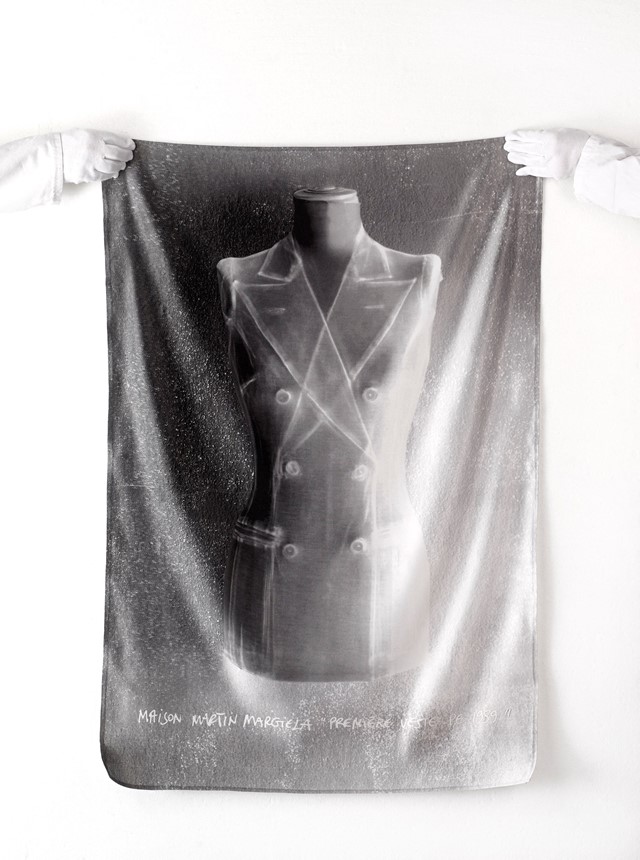As a landmark exhibition of his work opens in Paris, we take a closer look at the garments that defined the mysterious designer
It hardly matters that the Belgian designer Martin Margiela refused to articulate his thoughts behind the clothing he made – save for a rare interview via fax machine, or fragmented explanations passed through the Maison’s “spokesperson” – the collections he presented as part of his namesake label were a fierce vocabulary all of their own. It’s no stretch to say that contemporary fashion – both mens- and womenswear – began with him; the way he tore a garment down to its bones and then built it back up to give it new life, or turned trash to treasure, where broken porcelain, drinking straws or shoe laces were repurposed into items you could wear, propositioning an entirely new perspective on what luxury fashion meant in the process.
Such is the extent of Margiela’s influence that his hallmarks, once strange, and foreign – the roomy proportions, the frayed edges, the hybridisation of garments – now seem less so, absorbed, as they have been, by the designers that have come in his wake. His work continues to resound, as fashion once again looks back to the 1990s – just a few months ago, during Paris’ men’s shows, at Vetements, designer (and former Margiela employee) Demna Gvasalia revelled in the designer’s DIY spirit. Showing his own take on the split-toed Tabi boot alongside scribbled prints, drawn by children, like those Margiela used for early show invitations, the collection was an ode to his legacy. Margiela-philes (of which there are many) traded obscure references they had spotted, post show.
“His influence in fashion was immediate,” says Alexandre Samson, the curator of a new exhibition Margiela / Galliera, 1989-2009 at Paris’ Palais Galliera, the first career-spanning exhibition of his work in the city, and created with the help of the elusive designer himself. (It is rumoured that Margiela was in the building during the press viewings.) “He is one of the rare contemporary creators to fully question the fashion system, from its conception – using all that fashion has always hidden: linings, manufacturing processes – to its presentation, through its uses.”
Margiela, who notoriously left his namesake label in 2009, and in the years since has shied away from a subsequent design role in fashion, serves as artistic director for the retrospective. Not that he would describe it as such – in Margiela’s own words (passed, naturally, through the curator): “this exhibition is more than a retrospective. It’s a restitution of the 1989 to 2009 era based on a memory which seems has disappeared a bit.”
It comes at a decisive, and pertinent, moment in fashion. Margiela’s desire for anonymity was a rejection of the media’s influence over fashion, an influence that has since increased tenfold. In his reserve, he was daring – and now, appears more so, for the continuing refusal to lay his life bare, as other designers are increasingly pressed to do. “His ideas, driven by spontaneity, are now symbols of independence toward the now pressured system,” says Samson.
Here, we chart Margiela’s history through five pieces on display at the landmark exhibition.
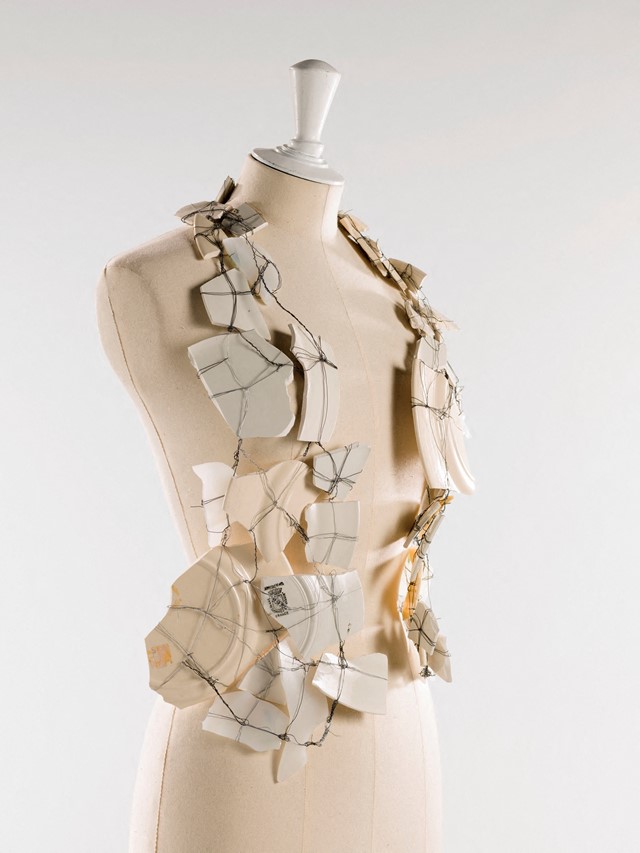
1. Porcelain waistcoat, A/W89
From its beginning, the Maison’s Artisinal line has relied on the strange allure of found materials. In this porcelain waistcoat, taken from the A/W89 collection, you see Margiela’s desire for destruction – “la mode Destroy”, as the French first deemed it – since, more politely referred to as “deconstruction”, the word that has defined his career. From destruction – here, the smashing of porcelain – came the potential for new forms, the useless shards of tableware, through Margiela’s handcraft, are reborn as an item of clothing, created with all the intricacy of French couture. This waistcoat, one of the earliest pieces in the exhibition, demonstrates what would be a career-long fascination with reincarnating disparate objects into unexpected new forms.
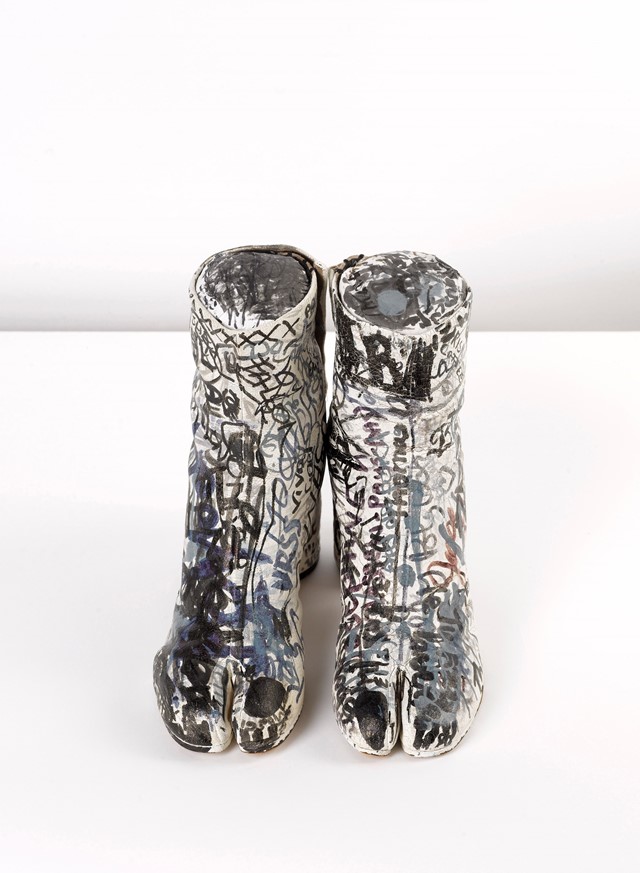
2. Graffitied Tabi boots, 1991
The Tabi boot is now so ubiquitous among fashion circles that it is difficult to imagine the near-revulsion they once caused. First shown in 1988, as part of his very first collection, the cloven-toed boots have become symbolic of Margiela’s work at large for the way they repurposed the traditional Japanese Tabi sock into an expression of fashion’s new avant-garde. At that first show, he had drenched his model’s bodies in red paint, meaning that their strange footprint was left imprinted on the runway – “I thought the audience should notice the new footwear. And what would be more evident than its footprint?” he purportedly said at the time. The graffitied version, above, created in 1991, is an ode to the designer’s desire to repurpose even his own archive, though the reappearance of the style in his early collections can perhaps be explained more simply: “In the beginning there was no budget for a new form, so I had no other choice than to continue with [the Tabi style] if I wanted shoes,” he said.
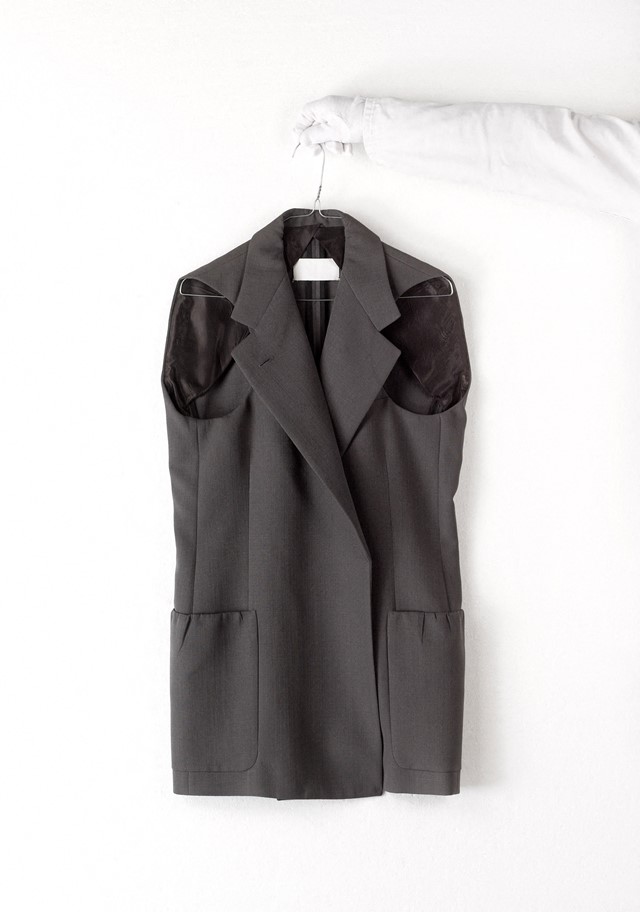
3. Flat sleeveless jacket, S/S98
Margiela may have once held a reputation for what was deemed a frenetic, pinned-together approach to fashion – in reality his clothing was anything but. An avid student of fashion, his work was as much about the art of making clothing as it was the ideas that they would eminate. Such was the case for his tailoring, of which he is a master – taking the humble suit, he pulled it apart and remade it stitch by stitch, and often inside out, initially rejecting the heavy shoulders of the 1980s for something more streamlined. The above, shown for S/S98, once again played with proportion, taking inspiration from the paper patterns of the previous collection to create ‘flat’ tailoring, pressed into place with an iron.
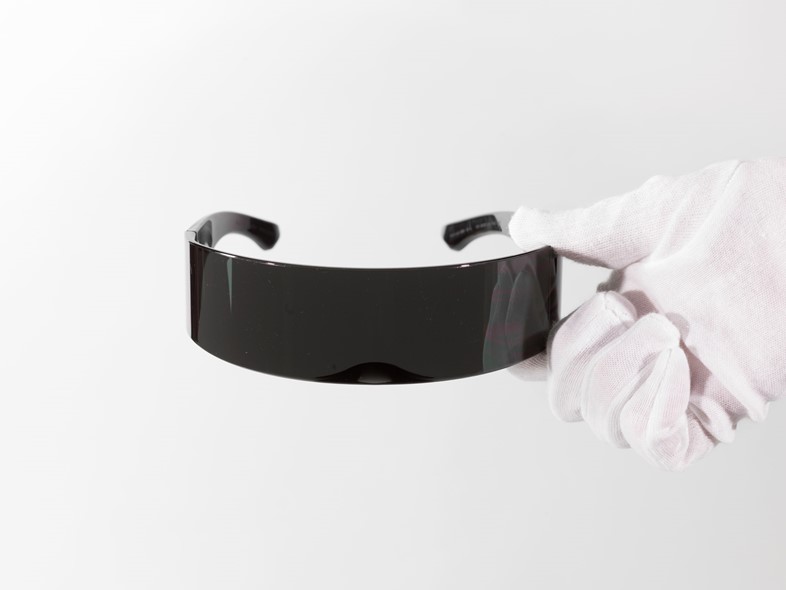
4. Incognito sunglasses, S/S08
Alexandre Samson, the curator of the exhibition, remembers the “Incognito” sunglasses of S/S08 as one of his first memories of Margiela, since stimulated by the 400-or-so garments in the museum’s collection – “I remember I was both attracted and repelled by these curious black glasses,” he says. Rimless, in a visor style, they seemed a declaration that he was not a designer fascinated only by the past, but the future, too. This idea was bolstered by the collection, where he showed cling-fit garments that smoothed the skin, like swimwear, alongside tailoring, exaggerated on the shoulders, evoking a Star Trek heroine. It was a new iteration of the Margiela woman, and a step away from her DIY roots – “something sexy this way comes,” Sarah Mower noted in her Vogue review at the time.
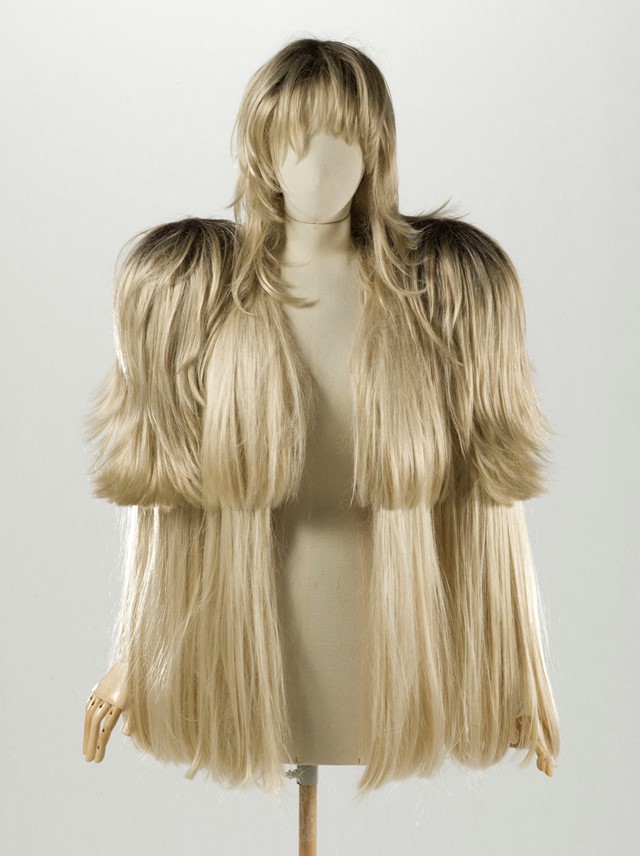
5. Wig coat and wig, the 20th Birthday Show, 2009
For what is now known as his 20th Birthday Show in 2009, Margiela presented something of a greatest hits – though not in any typical sense, the designer instead taking some of his memorable pieces and presenting them anew – at the centre, the “wig coat” and matching wig, that took its cues from the house’s A/W05 Artisanal collection. A play on the fur coats of Paris’ bourgeoisie, the surreal garment projected Margiela’s transgressive brand of glamour, and marked something of a full circle moment – a nod to the designer’s continued fascination with the reappropriation of found objects. Not long afterwards, in December 2009, Margiela would leave his namesake brand. In doing so, the 20th Birthday Show is now seen as the Margiela’s swansong, an enduring memory of the desginer’s vital creative force.
Margiela / Galliera, 1989-2009 is at Palais Galliera, until July 15, 2018.
